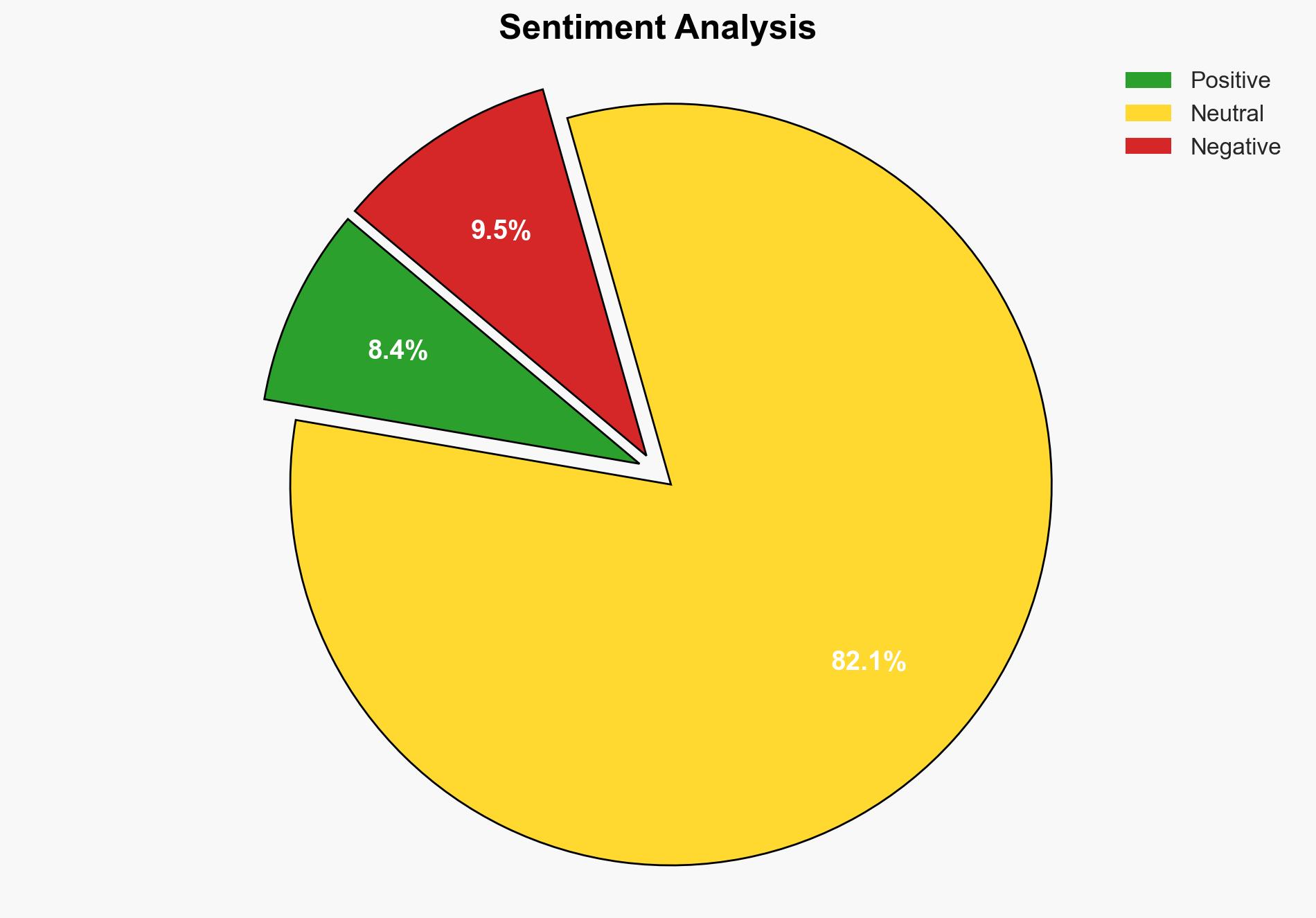Chinese APT Weaver Ant infiltrated a telco in Asia for over four years – Securityaffairs.com
Published on: 2025-03-24
Intelligence Report: Chinese APT Weaver Ant infiltrated a telco in Asia for over four years – Securityaffairs.com
1. BLUF (Bottom Line Up Front)
The Chinese Advanced Persistent Threat (APT) group, Weaver Ant, successfully infiltrated an Asian telecommunications provider’s network for over four years. The group utilized sophisticated techniques, including the deployment of the China Chopper web shell, to maintain persistent access and evade detection. This prolonged infiltration poses significant risks to national security, economic stability, and regional telecommunications infrastructure. Immediate measures are recommended to mitigate further risks and secure compromised systems.
2. Detailed Analysis
The following structured analytic techniques have been applied for this analysis:
General Analysis
Weaver Ant’s infiltration involved the use of multiple web shells, including a previously unknown in-memory variant of the China Chopper web shell. This variant enabled remote access and control over compromised servers, facilitating persistent access and data exfiltration. The attackers employed AES encryption to bypass web application firewalls, making forensic analysis challenging. Key evasion techniques included the use of specific keywords, payload obfuscation, and the suppression of event logs. The group also leveraged recursive HTTP tunneling for lateral movement and deployed additional tools for credential extraction and reconnaissance.
3. Implications and Strategic Risks
The infiltration by Weaver Ant poses significant risks to national security and regional stability. The ability to maintain undetected access to a telecommunications network could allow for the interception of sensitive communications, disruption of services, and potential manipulation of data. Economically, the breach could undermine trust in regional telecommunications providers and impact international business operations reliant on secure communications. The persistence and sophistication of the attack highlight vulnerabilities in current cybersecurity frameworks.
4. Recommendations and Outlook
Recommendations:
- Enhance cybersecurity measures by deploying advanced threat detection systems capable of identifying encrypted and obfuscated payloads.
- Implement regular security audits and penetration testing to identify and mitigate vulnerabilities.
- Strengthen regulatory frameworks to enforce stringent cybersecurity standards across the telecommunications sector.
- Invest in training programs to improve the cybersecurity skills of personnel within critical infrastructure sectors.
Outlook:
In the best-case scenario, immediate implementation of recommended measures could prevent further breaches and restore confidence in regional telecommunications security. In the worst-case scenario, failure to address vulnerabilities could lead to additional infiltrations, compromising national security and economic interests. The most likely outcome involves a gradual improvement in cybersecurity posture, with increased collaboration between government agencies and private sector entities to enhance threat intelligence sharing and response capabilities.
5. Key Individuals and Entities
The report does not mention specific individuals by name. However, it references a Chinese APT group known as Weaver Ant and highlights the involvement of Sygnia researchers in uncovering the infiltration.





